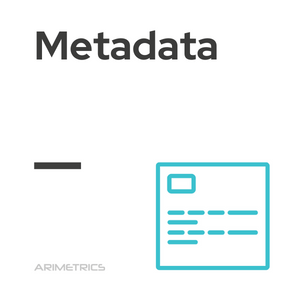 Definición:
Definición:
Metadata is a set of structured data that provides information about other data, allowing it to be identified and understood at a glance. In essence, it is “data about data”. This metadata is used to describe the information contained in web pages, documents or files, and is present in information objects on the Internet, giving them specific attributes to facilitate their detection and classification.
Nowadays, metadata are fundamental in digital marketing and search engines, as they play a crucial role in the positioning of content in search results (SERPs). They are closely related to SEO.
Metadata classification
There are several types of metadata, each with specific functions:
- Descriptive: They facilitate the identification and understanding of a source of information, allowing its quick location.
- Administrative: They include several subtypes:
- Technical metadata: Helps to decode and represent files, ensuring their correct visualization and use.
- Preservation metadata: Used for the long-term management of archives, ensuring their integrity and future accessibility.
- Rights metadata: Related to the intellectual property rights of the content, specifying the conditions of use and distribution.
- Structural: They define the relationships between different parts of a resource, facilitating the navigation and organization of the content.
- Markup languages: Combine metadata and markup to add additional structural or semantic features within the content.
These categories are not mutually exclusive and often overlap, providing a more complete and useful description of the resources.
What metadata is used for
The main function of metadata is to provide additional information about the resource being queried. It provides a quick overview that helps to better understand the resource and its possible uses. Metadata has multiple applications, but its greatest utility is in search engine optimization. search engine optimization. By accompanying search engines and searches, it is essential for companies wishing to optimize their content and attract a greater number of web users. By structuring metadata correctly, companies can improve their visibility in search engines, resulting in increased traffic and potential customers.
Metadata life cycle
The metadata life cycle is divided into three phases:
- Creation: Metadata is generated manually, automatically or semi-automatically. This phase involves deciding what information is relevant and how it will be structured.
- Manipulation: During this phase, metadata may be modified to reflect changes in the underlying data. Although this process may be automatic, it sometimes requires human intervention to ensure accuracy and relevance.
- Destruction: The final phase involves the removal of the metadata. It is essential to plan how this process will be carried out, as in some cases it is necessary to retain metadata for a variety of reasons, such as regulatory compliance or historical preservation.
Benefits of metadata
In an increasingly digital world, companies recognize the value of metadata to their business. Effective metadata management is essential to:
- Organize and classify data, facilitating its retrieval and analysis, enabling companies to make informed and strategic decisions.
- Improve decision making by providing quick access to relevant and up-to-date information.
- Increase business competitiveness by optimizing information management, which can translate into a better customer experience and greater operational efficiency.
- Optimize search engine positioning, improving the visibility and reach of online content.
